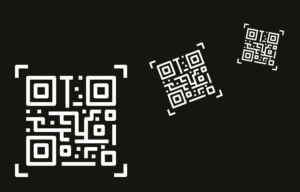What to consider when using QR codes on food labels
What to consider when using QR codes on food labels
Quick Response codes, commonly known as QR codes, have become increasingly popular as information continues to fight for space on labels. But, how exactly are they used and are they a win:win for both brands and consumers?

The use of QR codes has further been driven into wider consumer consciousness thanks to the COVID-19 pandemic which has seen people grow accustomed to scanning codes on their mobile phones to ‘check-in’ to restaurants and entertainment venues.
They’re also fast becoming the space-saving tool of choice for the food and beverage industry, where label space is at a premium and brands continue to face the challenge of balancing mandatory legal information with their marketing and branding objectives.
How Are QR Codes Used?
They can be used for many purposes, adding value to the product, building brand awareness, and improving the overall customer experience.
From sharing links to website pages, and social media channels and providing recipe ideas, to highlighting recycling information and the product’s environmental background. Some businesses in the fishing industry, for example, are using them to provide additional product origin information, even down to the boat’s name on where the fish was caught and the captain’s name at the helm.
Food companies have also trialled colourful QR codes to help people with sight impairments to support them in accessing product information when out shopping. Individuals can also use their mobile phones to detect the colourful barcodes with the information within them ‘read out’ by the phone, making it much more accessible.
Most recently, and in a somewhat pioneering move, the EU has approved using QR codes to communicate mandatory nutrition information on wine products to consumers, which may provide a glimpse of a future where some mandatory information can be presented digitally instead on the label.
Should Brands Be Wary?
QR codes have not come without regulatory challenges, especially in the food and beverage industry.
When using QR codes for the purpose of sharing further marketing information, such as competitions or offers relating to the product, it’s vital to remember that this information – although not on-pack – is still covered under general food law and is monitored by the Advertising Standards Authority (ASA).
Several food companies have fallen short on the law by using QR codes in the wrong way. One example saw a QR code used for an app designed and aimed at children, but which contained an advert for a food product. This advert, as concluded by ASA, was for a food product classed as High Fat, Sugar and Salt (HFSS) and therefore did not meet the advertising standards for children.
Enforcement Action
Any mandatory information in accordance with general UK and EU food laws must be included on the product packaging or on a securely attached label.
But many brands have made the error of removing mandatory labelling requirements and putting them through QR codes in order to make more room on the label for marketing purposes. This is not permitted and will likely result in action being taken from the relevant authorities – something which your food labelling company will ensure is avoided.
Hosting information on QR codes should also be carefully considered due to the possibility that some demographics may not have the technology or knowledge to use them. Moving too much of the information you want consumers to see to a QR code could be a risk, and still needs to be balanced with the mandatory requirements and core information that you wish to convey on-pack.
What’s the Outlook?
While they have many fantastic benefits and can be utilised to provide additional information on a product, they may not be accessible to everyone and so should not be the only way consumers can access useful product information.
Contact our team of experts if you have any queries.
Recent blogs:
Cell-based Meat – Is it Viable?
Next reads
What’s Next for Food & Drink? Our Experts’ Predictions for 2026
The Peanut Diaries: School and Social Occasions
The Peanut Diaries: Navigating Social Events and Celebrations with Food Allergies
The Peanut Diaries: A Parent’s Journey to Uncovering their Child’s Allergy
Keep up to date with our latest insights
Subscribe to our mailing list to stay in touch with the latest news, insights and updates from Ashbury





